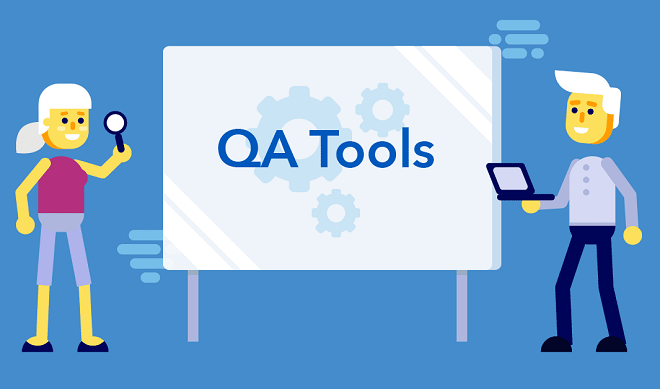Test Automation is the most effective way to enhance and improve applications’ efficiency, productivity, working, and coverage. Organizations find it tough to decide which QA tool to use for test automation. Among the many tools available in the market, it becomes hard to choose a tool that suits your project requirements and budget when there are more options. To examine which tool shall be appropriate for your organization, one needs to closely and strictly analyze the project requirements and the features a tool provides, like its advantages and disadvantages. This shall help to select the right tool for your project. To achieve so, we devised a strategic method for choosing the appropriate automation QA tool. So let’s look at the best way to choose the proper automation tool for a project using a basic yet very effective methodology. Check out this for more beneficial information on QA tools.

Step 1: Understanding the project requirements
Understanding the project requirements: Delivering a quality product, specifically a bug-free application, is crucial for an organisation’s success. Automated testing helps in a great way to help improve the quality of the project. Before you begin the process, gain a thorough grasp of your project requirements and needs, such as project type (web/ desktop/ mobile/laptop), project scope, your project’s budget, and the existing team’s code language proficiency. The concept of the good or bad tool does not exist, but the ROI of any tool is dependent on the demand, i.e. what exactly do you need to automate and how many test cases do you need to automate in how much time?
Primarily an organisation needs a QA tool that is easy to learn, use and explore, and it integrates seamlessly with project planning and test management tools.
Step 2: Considering the existing tool as a benchmark
Considering the existing tool as a benchmark: You will never quite know if a tool is the best unless you compare it with other tools out in the market. But comparing with all the tools available in the market shall be a challenge because there are so many to compare it to the latest tool that you use or the best tool available that you like. Therefore, that tool shall be the benchmark and help you determine which tool best suits you and your organisation. For example, there are few open-source tools available in the market that provide: a record-playback tool to produce and record playback test scripts, language support for C# Ruby, Java, JavaScript, Python, and Node.js lack proper and efficient customer support services. They might lack adequate maintenance as well. So, this way, you need to know all the pros and cons of a tool to select the best QA tool out there.
First, make a list of some of the tools you appreciate considering all their positives and negatives. Once you make an extensive list of all the tools, you can then short-list a few tools and compare them using certain parameters. And keep on proceeding with this until you find the best tool according to your requirements.
Step 3: Certain vital parameters to select the best tool for the project
Certain vital parameters to select the best tool for the project: Before choosing the ideal automation tool for a project, several important factors must be considered. Here we bring you a list of a few significant criteria to consider to determine which tool shall be the best based on project requirement and demands:
- Ease of Creating and Maintaining Scripts: Creating and maintaining test scripts should be as simple as possible to reduce the use of human and time, energy, and other resources.
- Test Suite Execution for Non-Technical Users: The test suite execution should be simple enough for any new project member to run as needed. It should also be simple for manual testers with little to no technical skills to use.
- Web, desktop, and mobile application support: It’s quite challenging to handle test automation using three separate tools for three different platforms. It is preferable to choose a tool that works with all three platforms and has the ability to perform the task required for all three platforms, so you won’t have to get separate tools for each platform.
- Intuitive Test Report: Because test reports instil trust in the management team, they must be intuitive and straightforward and easy to comprehend.
- Cross Browser Testing: When there are various end-users and no specific browser restrictions, cross-browser testing is necessary.
- Keyword and Data-Driven Testing Support: Keyword-driven testing is a complement to the data-driven testing methodology. When a project grows in complexity, the test framework must be expanded to fulfil the project’s needs.
- Technical Support and Assistance: Automation Engineers will undoubtedly require assistance while dealing with project-critical issues. It would be pretty beneficial to have a tool that provides technical support and assistance at the same time.
- Support for C#, Java, Python, and others: It is impossible to capture every test situation. The tester may be required to write the code in some circumstances. As a result, a tool that supports the necessary language for writing bespoke scripts would be beneficial for many projects.
- Integration of TFS DevOps with builds: It is vital to support integrating with Continuous Integration systems for automated builds and deployments.
- Pricing: Using the above qualities and project cost estimates, assess the cost differences between the various tools and their benefits, then choose the best price for your tool.
Step 4: Leverage Pugh Matrix Technique for Analysis
Based on the above-stated criteria, leverage the Pugh Matrix technique and that will help you to choose the best tool for your team.
Conclusion
These are not fixed steps to follow, but these steps can help you when selecting the right QA tool for your organisation. One should always remember that there is no good or bad tool; it depends on the project requirement and the organisation’s nature. So, first, learn about your project requirements and needs, and then try to follow the steps mentioned in this article to find an appropriate QA tool that meets your needs and fulfils your vision. The choice of the right automation tool is very important to achieving automation success for your organisation.

